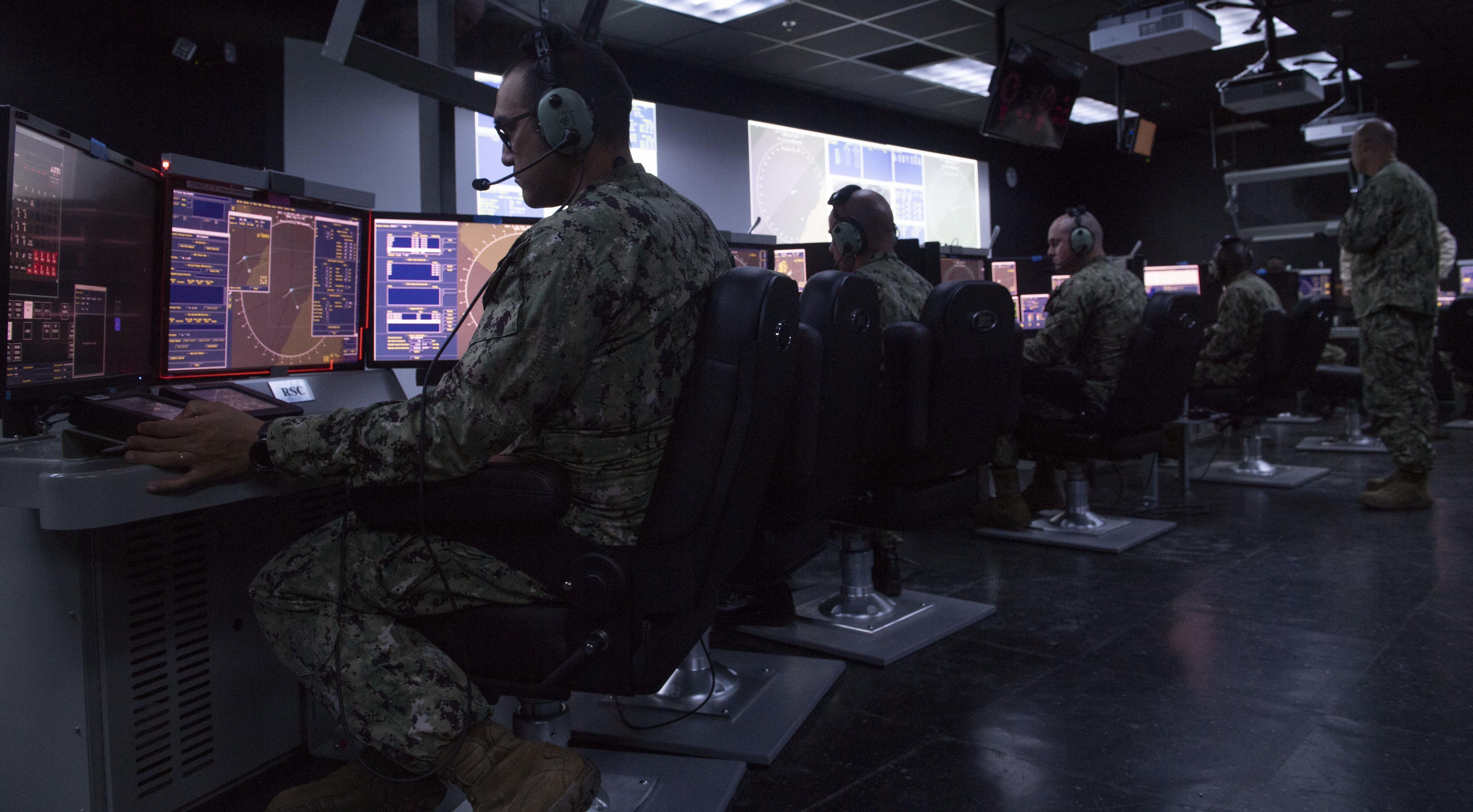
NAVAL STATION NORFOLK, Va. – The surface force is catching up with naval aviation in how it prepares for tougher, more complex fights by opening new facilities for combat training.
The new Combined Integrated Air and Missile Defense / Anti-Submarine Warfare Trainer (CIAT) at Naval Station Norfolk is building on a tradition of fighter simulator technology to craft training for destroyer and cruiser sailors that simulate fighting submarines and air threats with the best fidelity short of being at sea. It’s the second CIAT facility in the Navy, behind a similar trainer in San Diego
The facility in Norfolk, set to formally reach initial operational capability next month, is built around not only crafting realistic scenarios for combat information center sailors but also letting them review how they performed.
“The beauty of this facility is the playback capability to play back what happened, discuss, learn, do it again and try new things,” Rear Adm. Jesse Wilson, commander of Naval Surface Force Atlantic, told reporters earlier this month.
For example, the sailors in the simulator can go through the motions of firing a missile at an air threat again and again, and trainers can parse where mistakes were made to the split second, said Capt. Dave Stoner, the commander of the Center for Surface Combat Systems in Norfolk.
“We can hear the audio of the watch standers as they go through their cadence. We can see what they saw on their screens, and what the system was really doing, and what the watch stander perceived it to be [doing],” he said. Then we can “have that discussion and then come right back in here and roll through that again. That is not capable on the ships today.”
Starting this month, crews from ships at the waterfront in Norfolk will now drill on the systems to simulate everything from tracking enemy submarines to launching missiles against air targets as the sailors train in the CIAT.
As each crew comes in and runs scenarios repeatedly, individual commanders can tweak how the staff watch bills based on what they learn after focused training.
“You’re able to do that in this facility because you’re able to do multiple runs. You can’t do that underway. We don’t have the fuel to go out and run these sets and reps in real-time,” Wilson said.
The service is evaluating what else it could do with the capability beyond training a single ship’s crew. In the future, the CIAT has the power to connect to similar trainers to create scenarios with more than ship, or to patch in the combat system of a ship underway for so-called live, virtual and constructive (LVC) training.
“Discussions are ongoing right now. [That’s] where the Navy and the DoD is moving in general,” Stoner said. “We are absolutely in those discussions and trying to figure out the best way to most effectively use this trainer in the future.”
The standup of the trainer has been long planned for both waterfronts and is separate from two new Mariner Skills Training Program school houses that were recommended following the two fatal destroyer collisions of USS John McCain (DDG-56) and USS Fitzgerald (DDG-62) in the Western Pacific in 2017.





